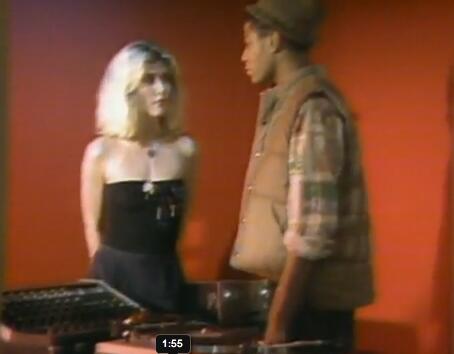- Facebook48
- Twitter1
- Total 49
Ethan Zukerman’s review of Kevin Driscoll’s The Modem World: A Prehistory of Social Media made me think back to my own early years and how I experienced computers and digital culture. I was never an early adopter or a power user, but I grew up in a college town at a pivotal time (high school class of 1985). As I nerd, I was proximate to the emerging tech culture even though I inclined more to the humanities. I can certainly remember what Ethan calls the “mythos of the rebellious, antisocial, political computer hacker that dominated media depictions until it was displaced by the hacker entrepreneur backed by venture capital.”
- ca. 1977 (age 10): My mom, who’d had a previous career as a statistician, took my friend and me to see and use the punchcard machines at Syracuse University. I recall their whirring and speed. Around the same time, a friend of my aunt owned an independent store in New York City that sold components for computer enthusiasts. I think he was also into CB radio.
- ca. 1980: Our middle school had a work station that was connected to a mainframe downtown; it ran some kind of simple educational software. The university library was turning its catalogue into a digital database, but I recall that the physical cards still worked better.
- 1982-85: I and several friends owned Atari or other brands of “home computers.” I remember printed books with the BASIC code for games that you could type in, modify, and play. We wrote some BASIC of our own–other people were better at that than I was. I think you could insert cartridges to play games. The TV was your monitor. I remember someone telling me about computer viruses. One friend wrote code that ran on the school system’s mainframe. A friend and I did a science fair project that involved forecasting elections based on the median-voter theorem.
- 1983: At a summer program at Cornell, I used a word processor. I also recall a color monitor.
- 1985: We spent a summer in Edinburgh in a rented house with a desktop that played video games, better than any I had seen. I have since read that there was an extraordinary Scottish video game culture in that era.
- 1985-9: I went to college with a portable, manual typewriter, and for at least the first year I hand-wrote my papers before typing them. The university began offering banks of shared PCs and Macs where I would edit, type, and print drafts that I had first written by hand. (You couldn’t usually get enough time at a computer to write your draft there, and very few people owned their own machines.) We had laser printers and loved playing with fonts and layouts. During my freshman year, a friend whose dad was a Big Ten professor communicated with him using some kind of synchronous chat from our dorm’s basement; that may have been my first sight of an email. A different dorm neighbor spent lots of time on AOL. My senior year, a visiting professor from Ireland managed to get a large document sent to him electronically, but that required a lot of tech support. My resume was saved on a disk, and I continuously edited that file until it migrated to this website in the late 1990s.
- 1989-91: I used money from a prize at graduation to purchase a Toshiba laptop, which ran DOS and WordPerfect, on which I wrote my dissertation. The laptop was not connected to anything, and its processing power must have been tiny, but it had the same fundamental design as my current Mac. Oxford had very few phones but a system called “pigeon post”: hand-written notes would be delivered to anyone in the university within hours. Apparently, some Oxford nerds had set up the world’s first webcam to allow them to see live video of the office coffee machine, but I only heard about this much later.
- 1991-3: My work desktop ran Windows. During a summer job for USAID, we sent some kind of weekly electronic message to US embassies.
- 1993-5: We had email in my office at the University of Maryland. I still have my first emails because I keep migrating all the saved files. I purchased this website and used it for static content. My home computer was connected to the Internet via a dial-up modem. You could still buy printed books that suggested cool websites to visit. I made my first visit to California and saw friends from college who were involved with the dot-com bubble.
- 2007: I had a smart phone and a Facebook account.
It’s always hard to assess the pace of change retrospectively. One’s own life trajectory interferes with any objective sense of how fast the outside world was changing. But my impression is that the pace of change was far faster from 1977-1993 (from punchcard readers to the World Wide Web) than it has been since 2008.


